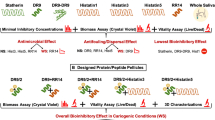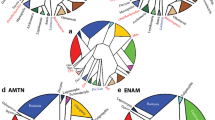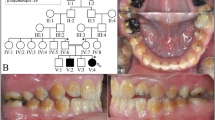Abstract
I MADE some observations on the nature of enamel protein in 19361. The possible role of enamel protein in the production of caries is described below.
This is a preview of subscription content, access via your institution
Access options
Subscribe to this journal
Receive 51 print issues and online access
$199.00 per year
only $3.90 per issue
Buy this article
- Purchase on SpringerLink
- Instant access to full article PDF
Prices may be subject to local taxes which are calculated during checkout
Similar content being viewed by others
References
Pincus, P., Nature, 138, 970 (1936).
Levene, P. A., "Hexosamines and Mucoproteins" (Longmans, Green, London, 1925).
Wassermann, F., J. Dent. Research, 23, 463 (1944).
Meyer, K., and Smyth, E. M., J. Biol. Chem., 119, 507 (1937).
Neuberg, C., and Cahill, W., Rend. Accad. Lincei, 22, 149 (1935).
Frisbie, H. E., Nuckolls, J., and Saunders, J. B. de C. M., J. Amer. Coll. Dent., 243 (1944).
Author information
Authors and Affiliations
Rights and permissions
About this article
Cite this article
PINCUS, P. Relation of Enamel Protein to Dental Caries. Nature 161, 1014 (1948). https://doi.org/10.1038/1611014a0
Issue date:
DOI: https://doi.org/10.1038/1611014a0
This article is cited by
-
Analysis of dentine glycosaminoglycans using high-performance liquid chromatography
Calcified Tissue International (1983)
-
Proteoglycans of dentine and predentine
Calcified Tissue Research (1977)
-
Glycosaminoglycans of human dentine
Calcified Tissue Research (1974)
-
Glycosaminoglycans of dentine and predentine
Calcified Tissue Research (1972)
-
Mucosaccharides and glycoproteins
Ergebnisse der Physiologie Biologischen Chemie und Experimentellen Pharmakologie (1959)



